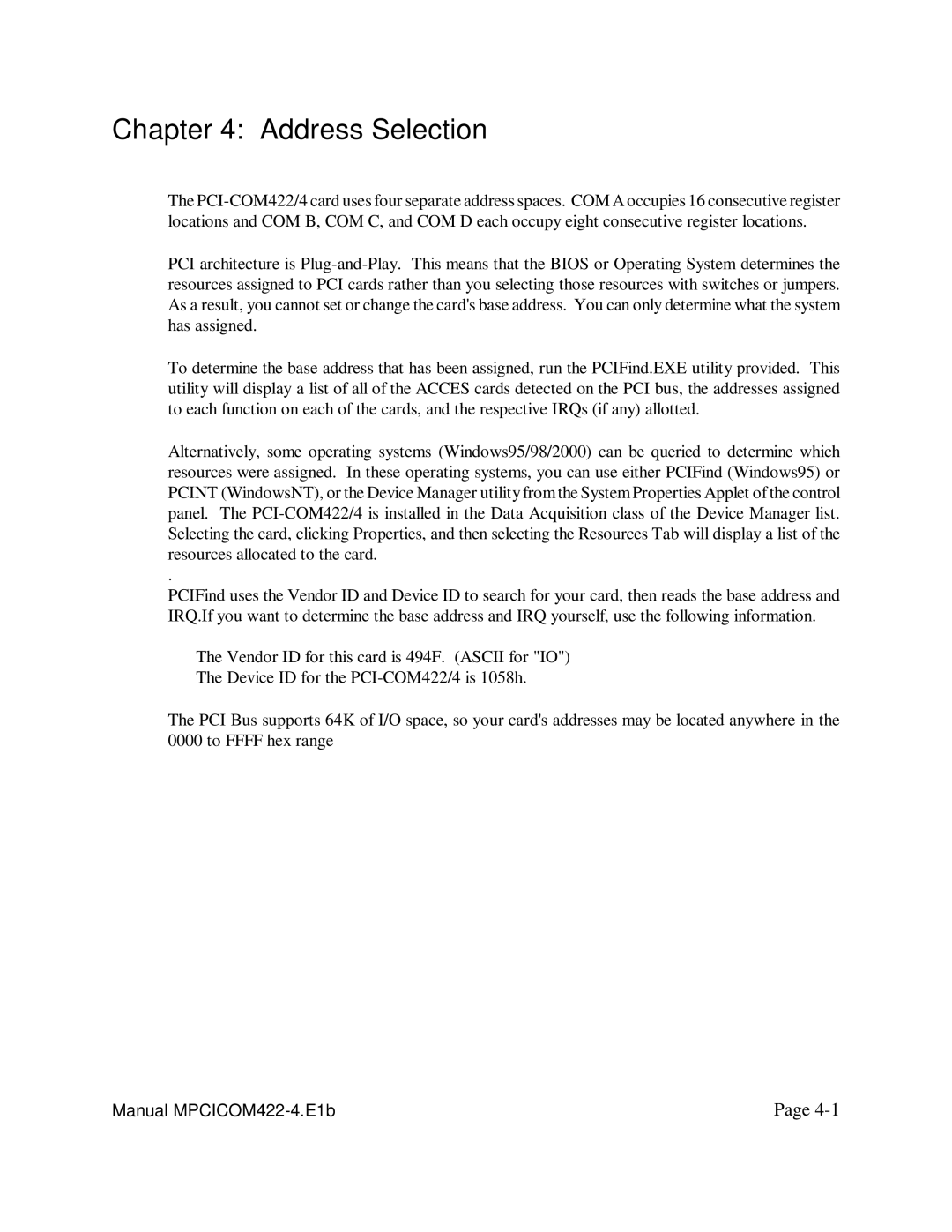Chapter 4: Address Selection
The
PCI architecture is
To determine the base address that has been assigned, run the PCIFind.EXE utility provided. This utility will display a list of all of the ACCES cards detected on the PCI bus, the addresses assigned to each function on each of the cards, and the respective IRQs (if any) allotted.
Alternatively, some operating systems (Windows95/98/2000) can be queried to determine which resources were assigned. In these operating systems, you can use either PCIFind (Windows95) or PCINT (WindowsNT), or the Device Manager utility from the System Properties Applet of the control panel. The
.
PCIFind uses the Vendor ID and Device ID to search for your card, then reads the base address and IRQ.If you want to determine the base address and IRQ yourself, use the following information.
The Vendor ID for this card is 494F. (ASCII for "IO")
The Device ID for the
The PCI Bus supports 64K of I/O space, so your card's addresses may be located anywhere in the 0000 to FFFF hex range
Manual | Page |
